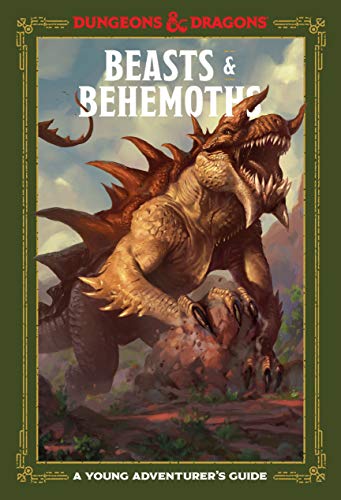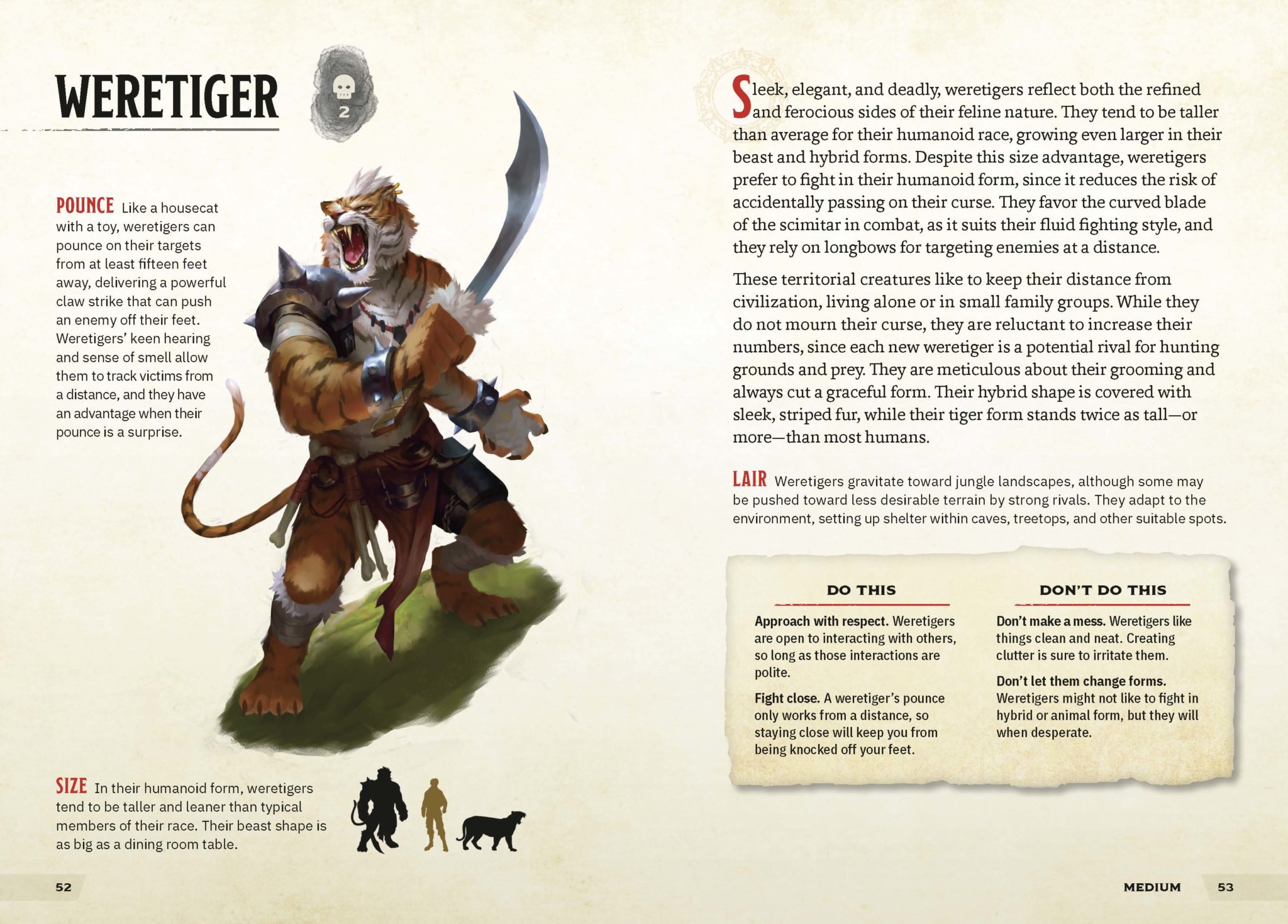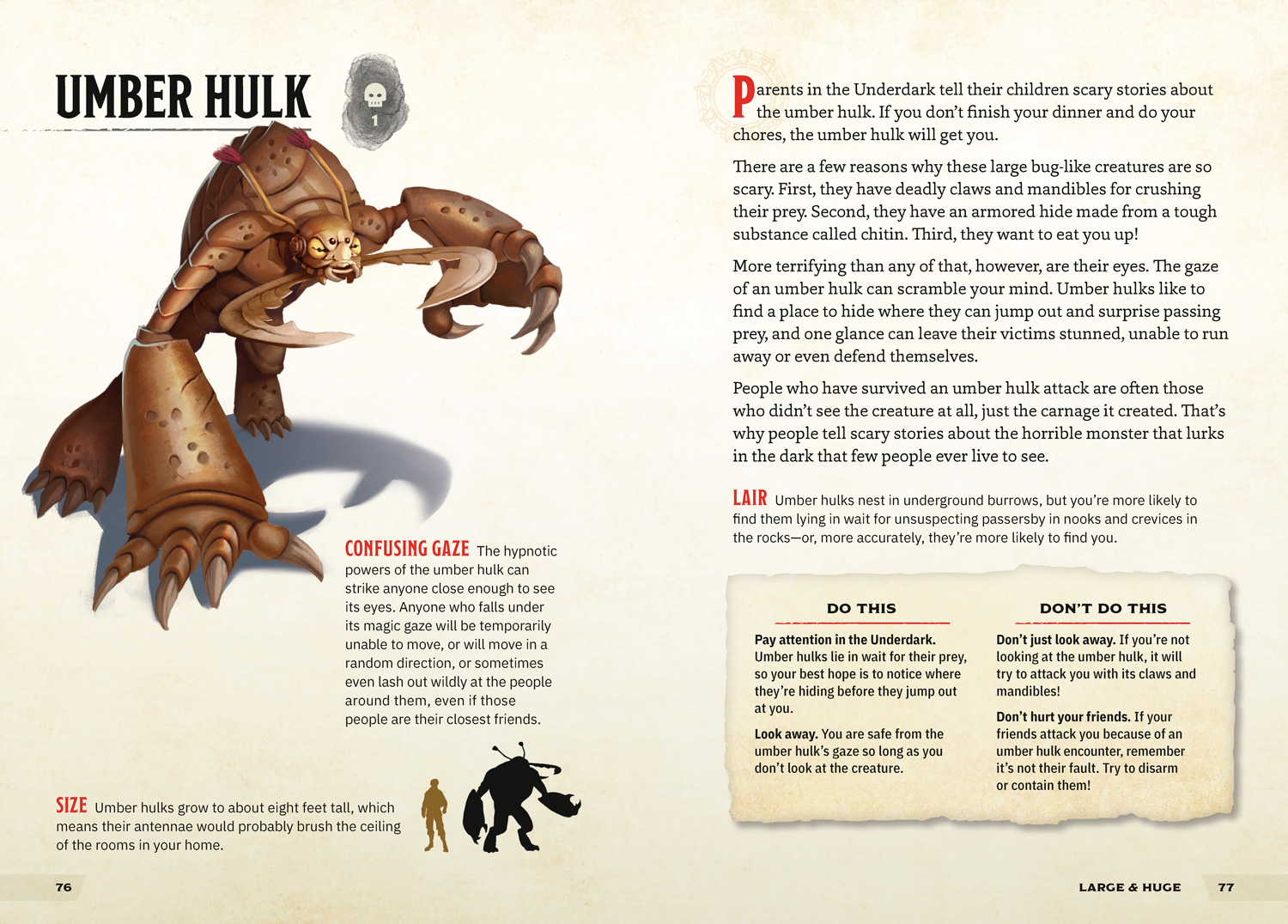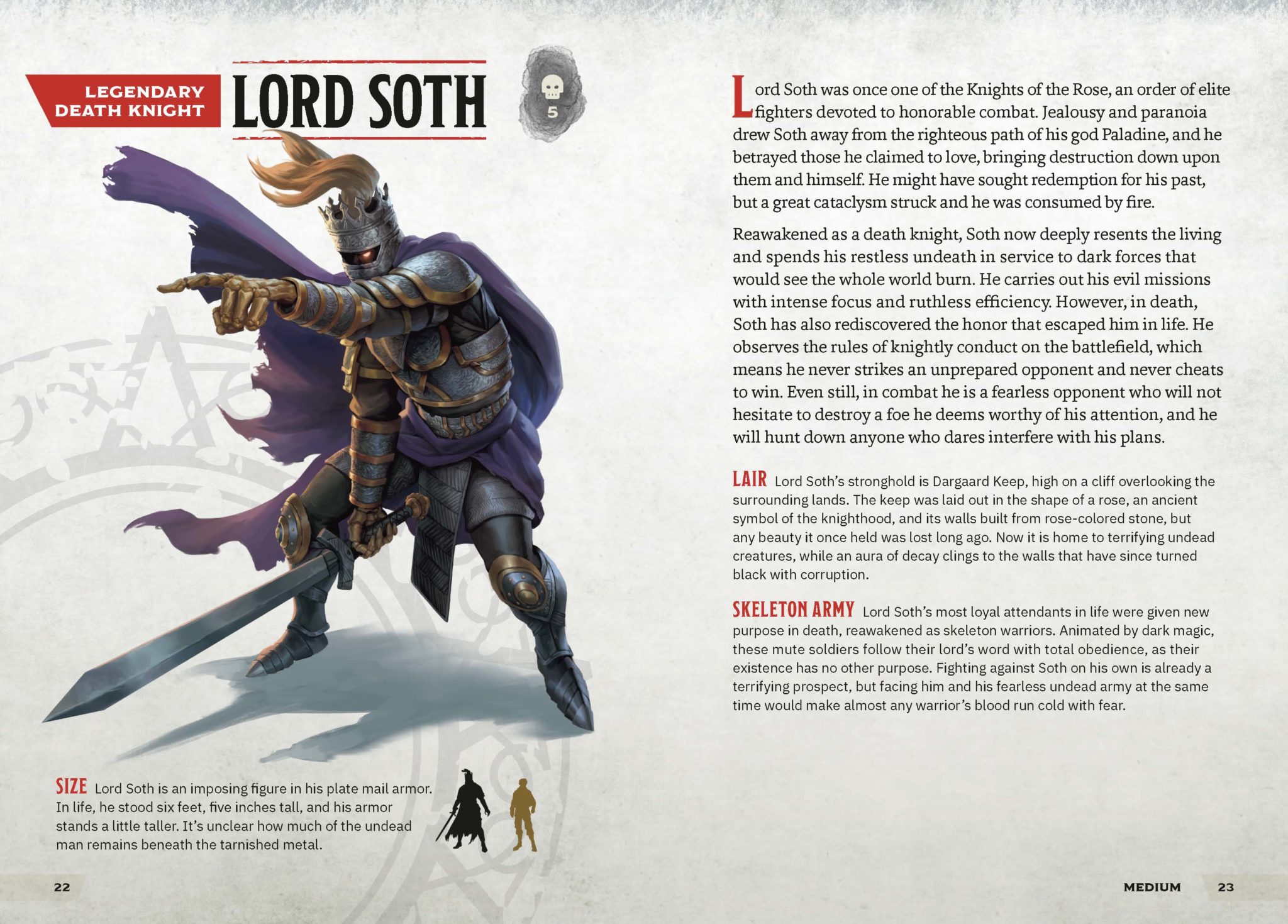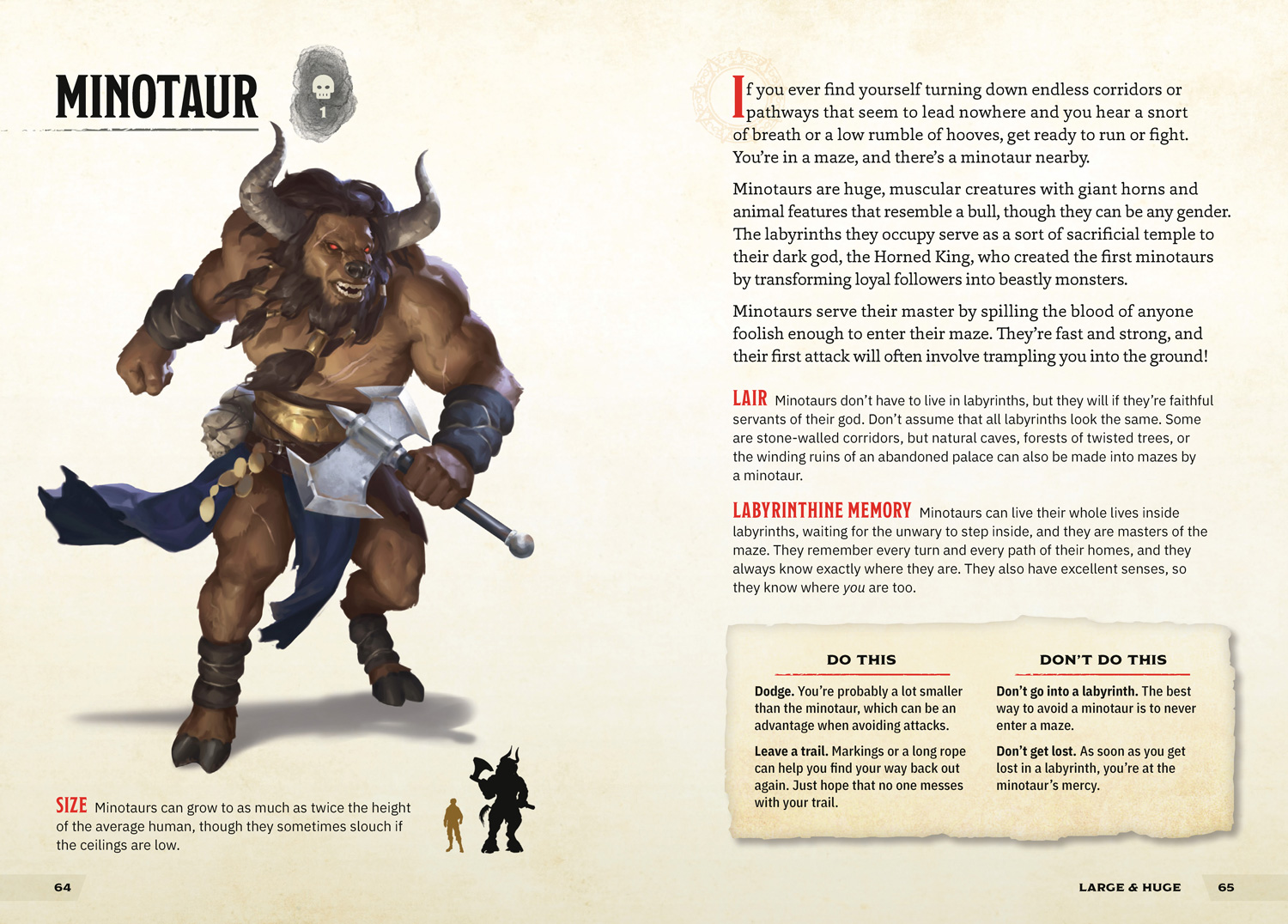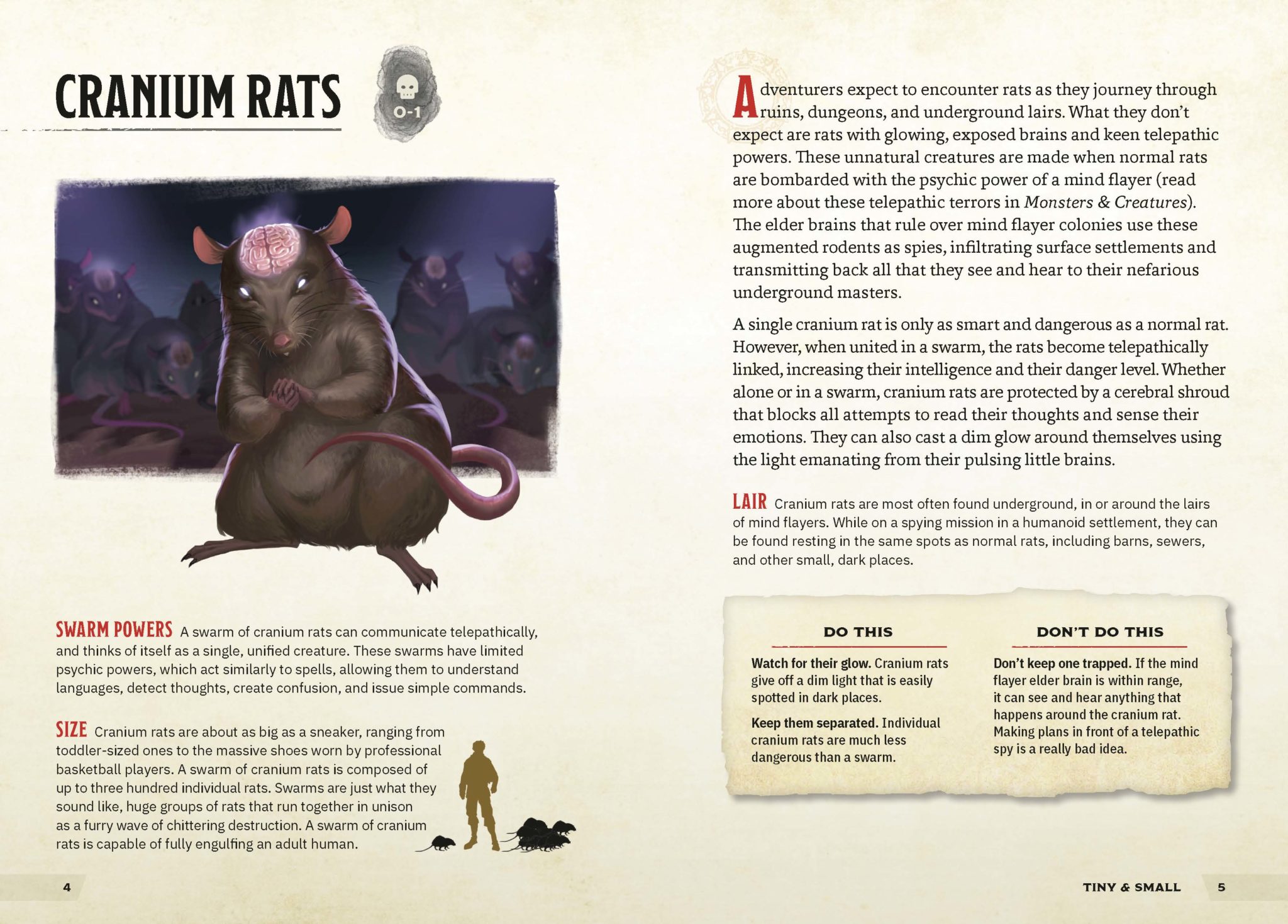D&D: Things We Learned From The Young Adventurer’s Guides
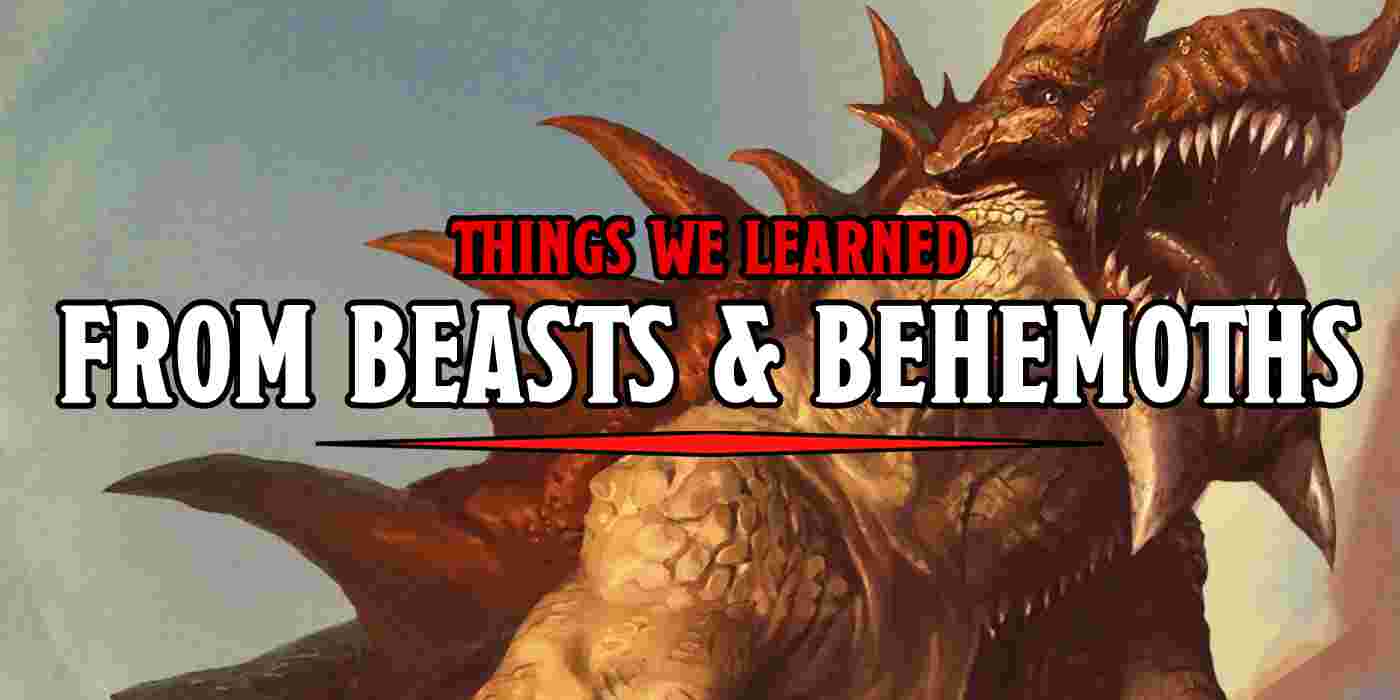
There’s a new Young Adventurer’s Guide out–Beasts & Behemoths goes in depth on big, bulking D&D monsters–here’s a few reasons these guides are the best.
The Young Adventurer’s Guides are some of the best resources you can find out there for getting into D&D. And you won’t find any rules in them, but that’s not what these books are about. They’re all about getting into the world of D&D. Instead of talking about how your character can use a +3 longsword, the books talk about what a longsword is, and more importantly what it looks like. The latest entry in the series, Beasts & Behemoths, talks about creatures of all shapes and sizes in D&D and how they fit in the world.
And because they have the freedom of not being rulebooks, they can talk about the important things. Like looking for details like the psionic glow of a cranium rat’s power, or how you can earn the trust of a Girallon pack’s leader to pass through their territory unharmed. Here are a few lessons that I learned reading through Beasta & Behemoths.
Not Every Foe Has To Be Fought
When confronting monsters, it isn’t all about swinging your sword. Even fierce beasts can be soothed with the right offer of music/a gift/display of power. Whether distracting ogres with illusion spells to sneak past, offering up girallons gifts of meat, or parleying with the local lycanthrope, your characters have more than one way to approach each counter. And unlike in previous editions, you get XP for getting past the encounter one way or the other–so if something’s well above your weight, combat-wise, maybe there’s another solution for you.
Look For Signs Of Creatures Everywhere
One of my favorite details in the book are the entries that talk about how you can spot where creatures are so you can be aware of potential danger. In the Yuan-ti section, they advise keeping an eye out for yuan-ti carvings in “ancient cities” as a sign they may not be as abandoned as you think. Or in Umber Hulks where they talk about how to spot signs of an umber hulk den so you can avoid blundering into their nest. Whether you’re using details to be forewarned or forearmed, it’s a great way to get drawn into the world.
If you’re a DM, use these monstrous details to foreshadow the creatures lurking ahead to your players. Show them what lies in store and watch the tension rise!
Any Monster Can Be Legendary
Occasionally you’ll get entries for “legendary” examples of each creature. And what I love about this is that what makes these monsters legendary isn’t some mechanic like having legendary actions or special attacks or anything, it’s all about the story. For example, you might encounter Queen Luluah, a legendary sphinx who was blessed by the goddess Chauntea and became an immortal sphinx. Queen Luluah looks to uplift brave young women who want to be heroes and might spy on such heroes through the eyes of cats or visit them in dreams.
You can have a legendary creature without having to make a ton of rules. All you have to do is come up with a unique story.
Location Location Location
The place you have your epic encounter plays just as much a role as whatever you’re encountering. And Beasts & Behemoths is full of helpful advice to consider where you’re encountering the creatures it describes. Are you fighting underwater? In a graveyard? Whatever the answer, the details of the environment are sure to make every encounter worth talking about.
Talk About Your Feelings
Probably the best advice in the book, though, comes at the end of the book. Beasts & Behemoths emphasizes over and over that you are using your monsters to tell a story. It gives some great examples of how to use encounter creation details to get your story started before you even roll dice, but when it gets to a list of questions they drop this on you:
What should someone feel as they experience your story?
That is such an important question, and one that is addressed in the Dungeon Master’s Guide, aka the most underrated book in D&D–but this one turns it on everyone, and I think one of the biggest lessons I’m taking away from this is that everyone at the table should be thinking about how they want the others to feel from the adventure.
Want to learn more about the Young Adventurer’s Guides? Here’s our overview video:
Check out the Young Adventurer’s Guides today–and Happy Adventuring!

